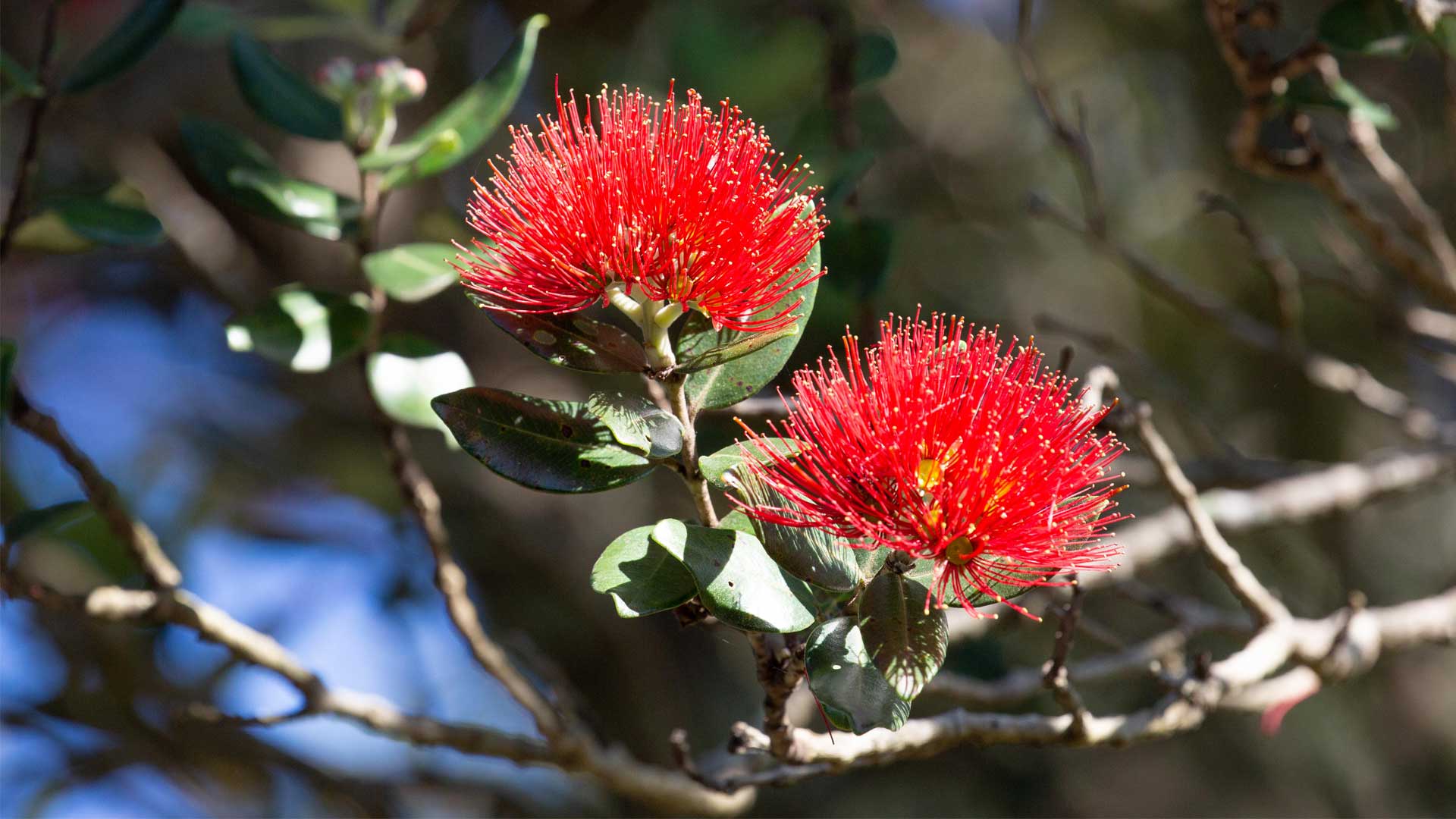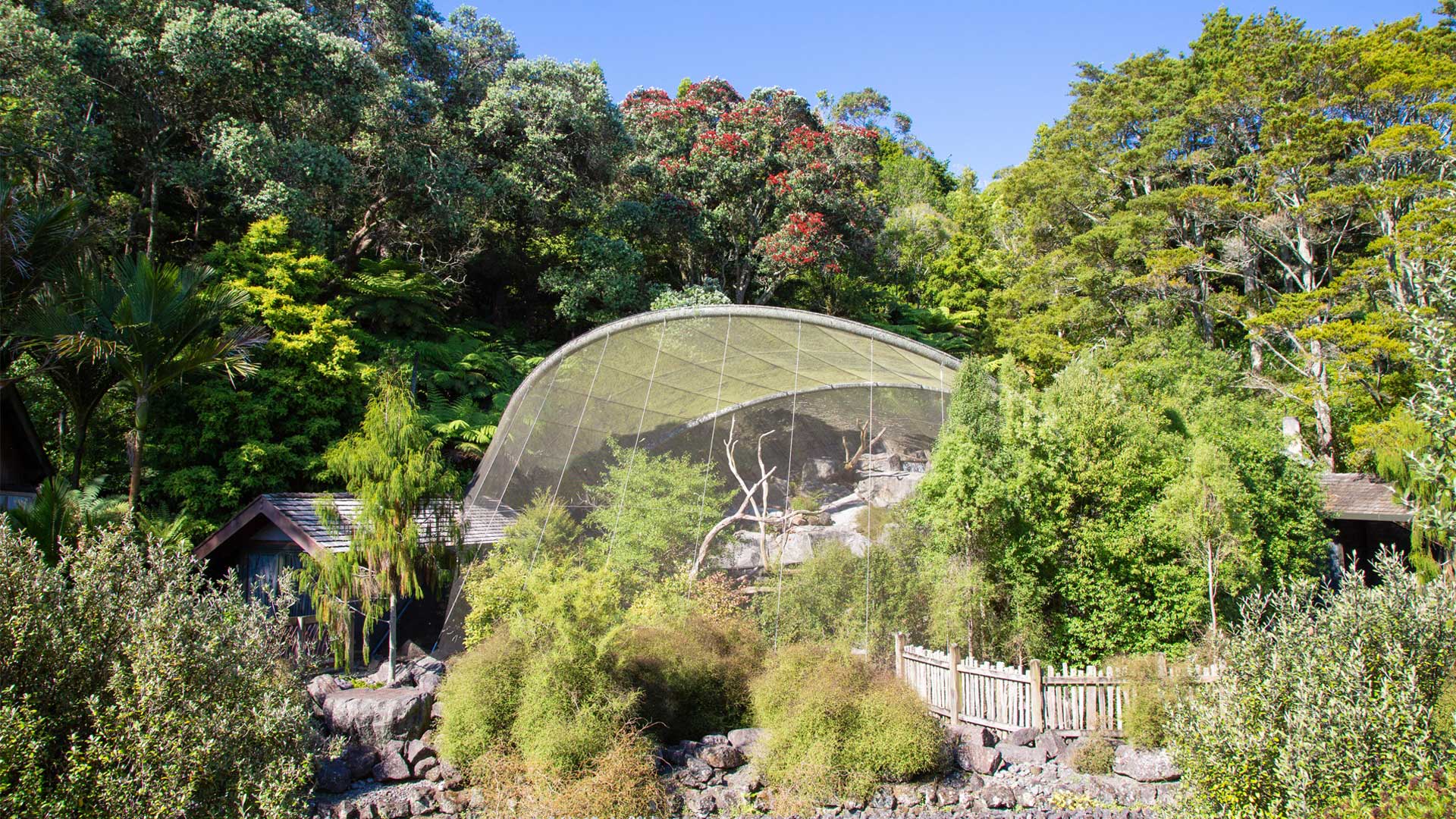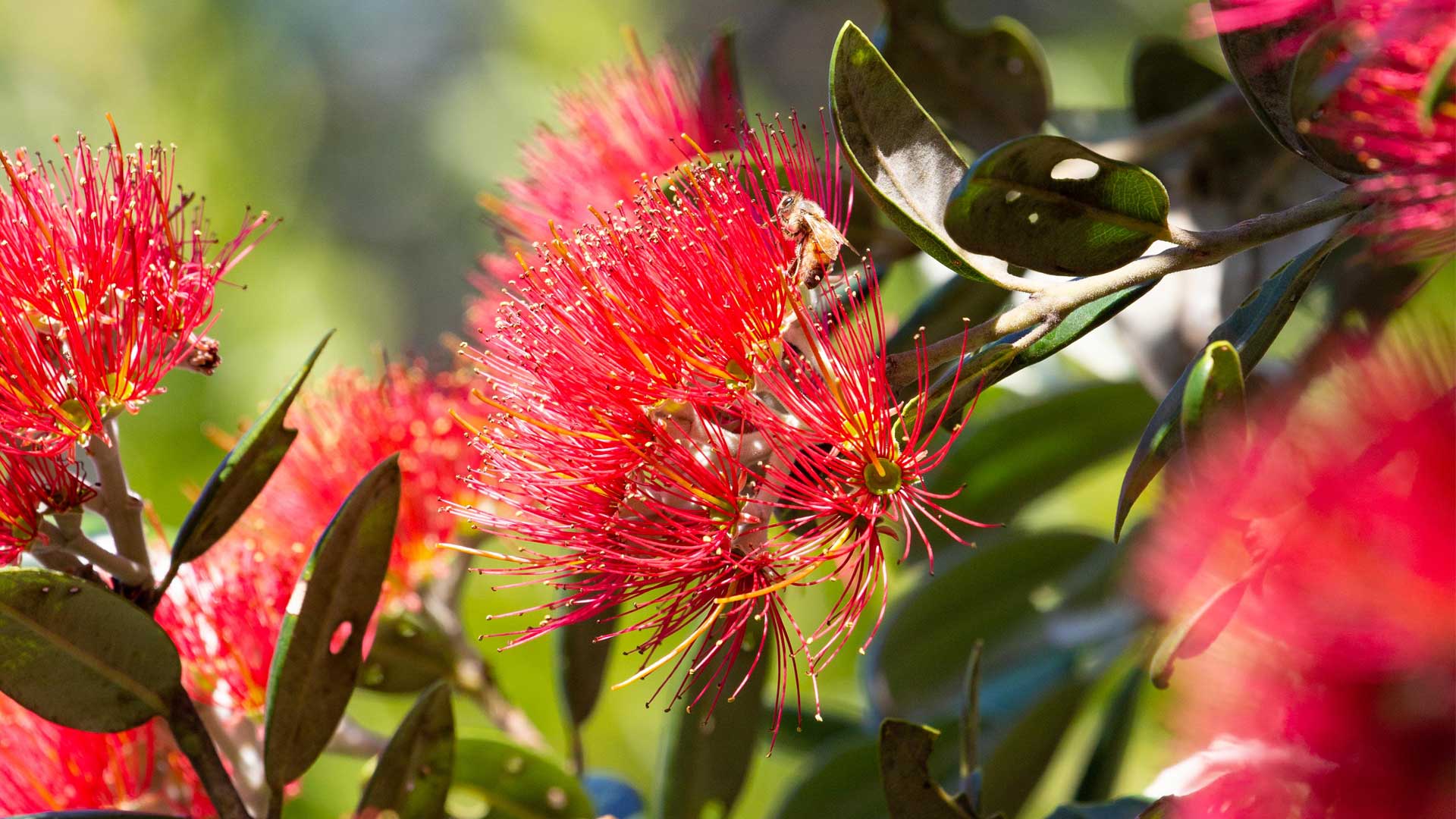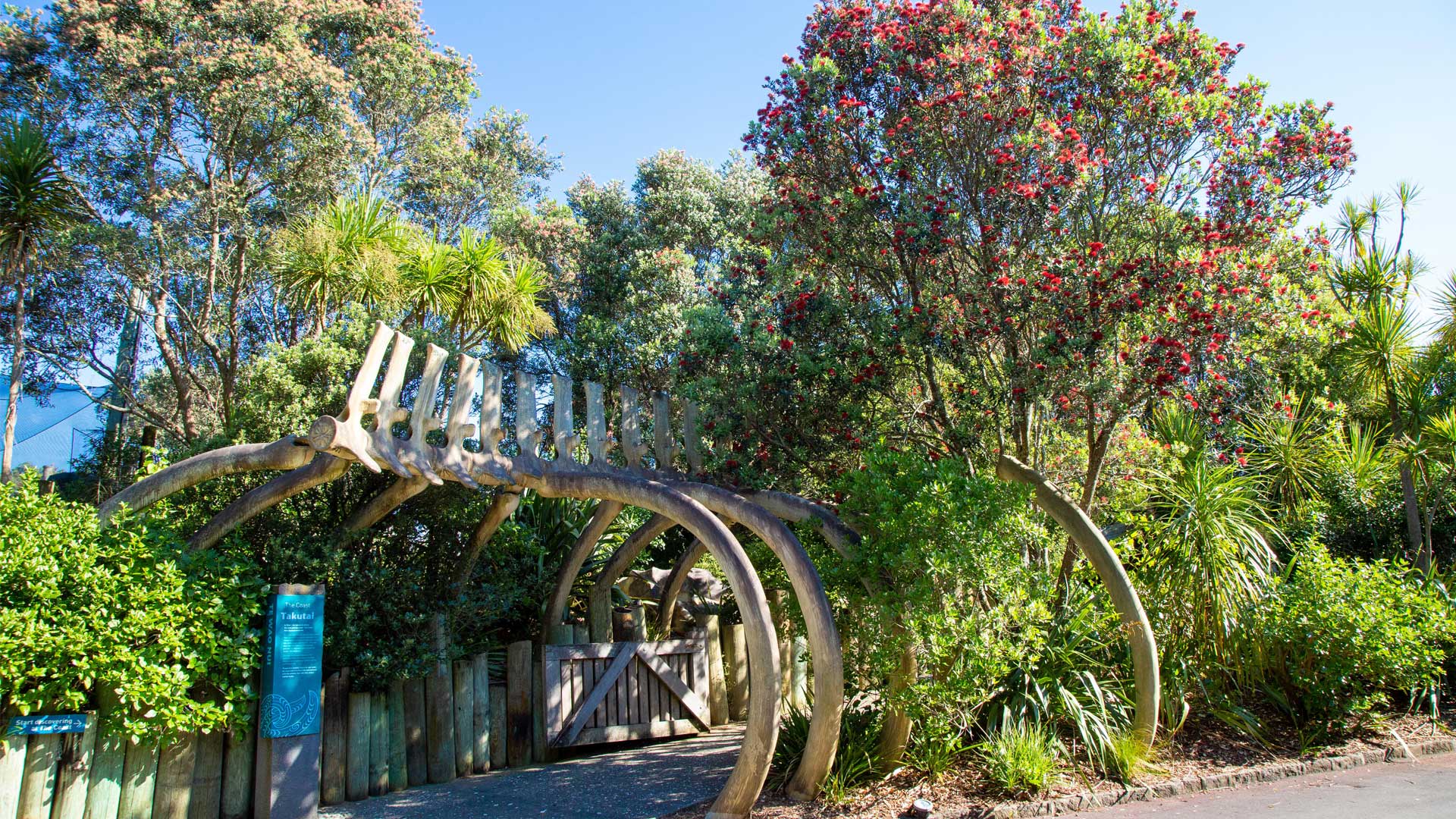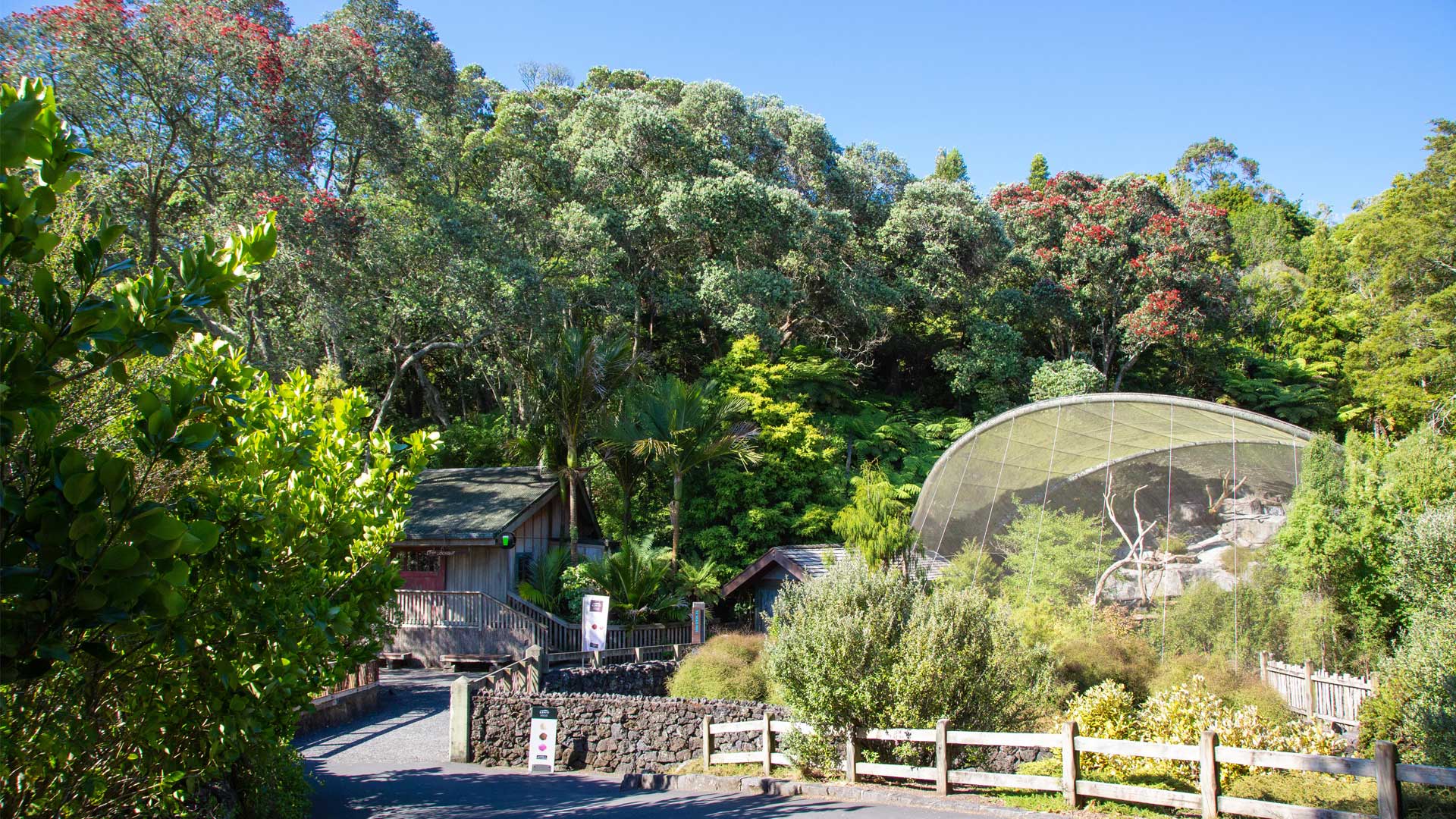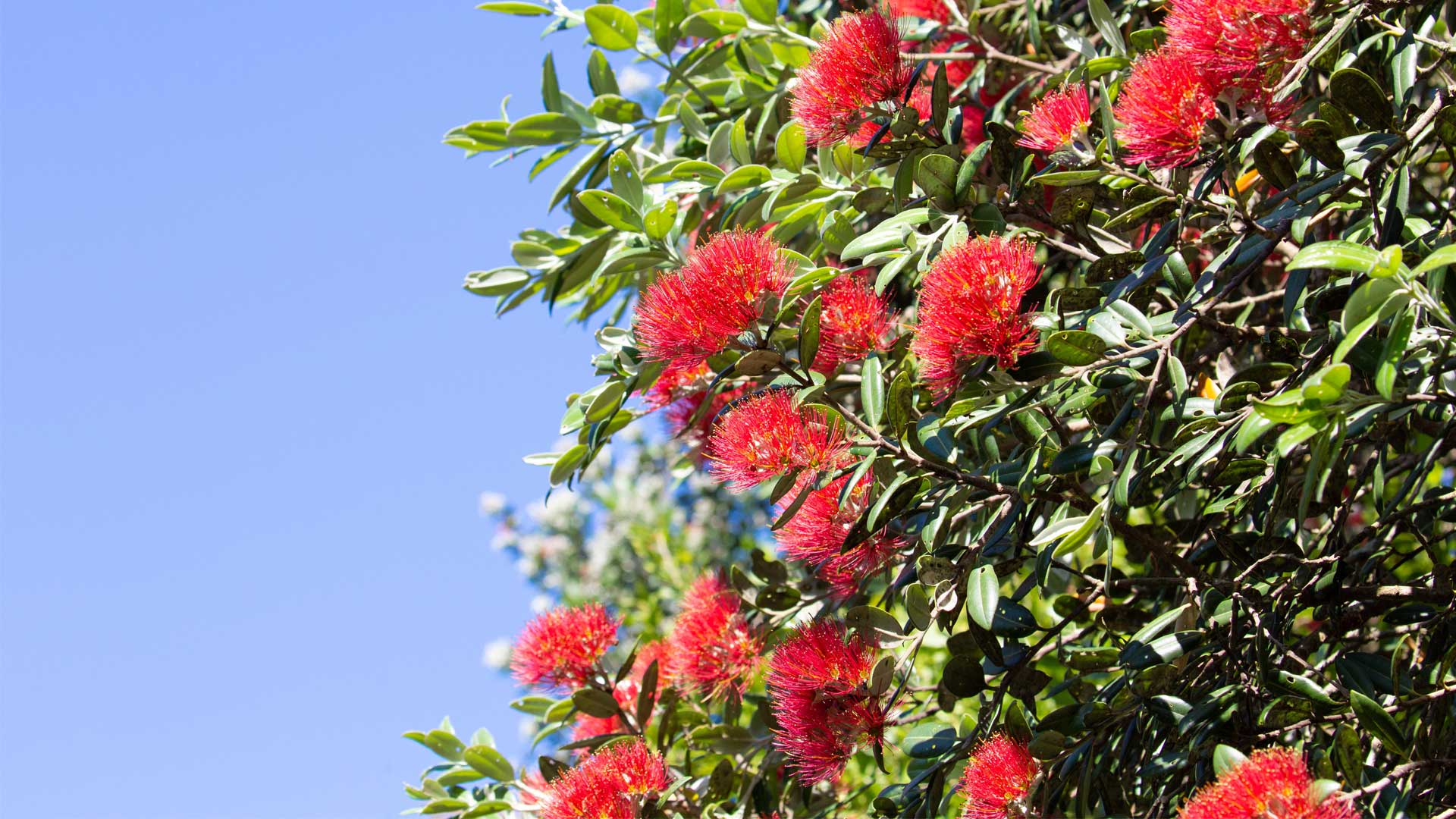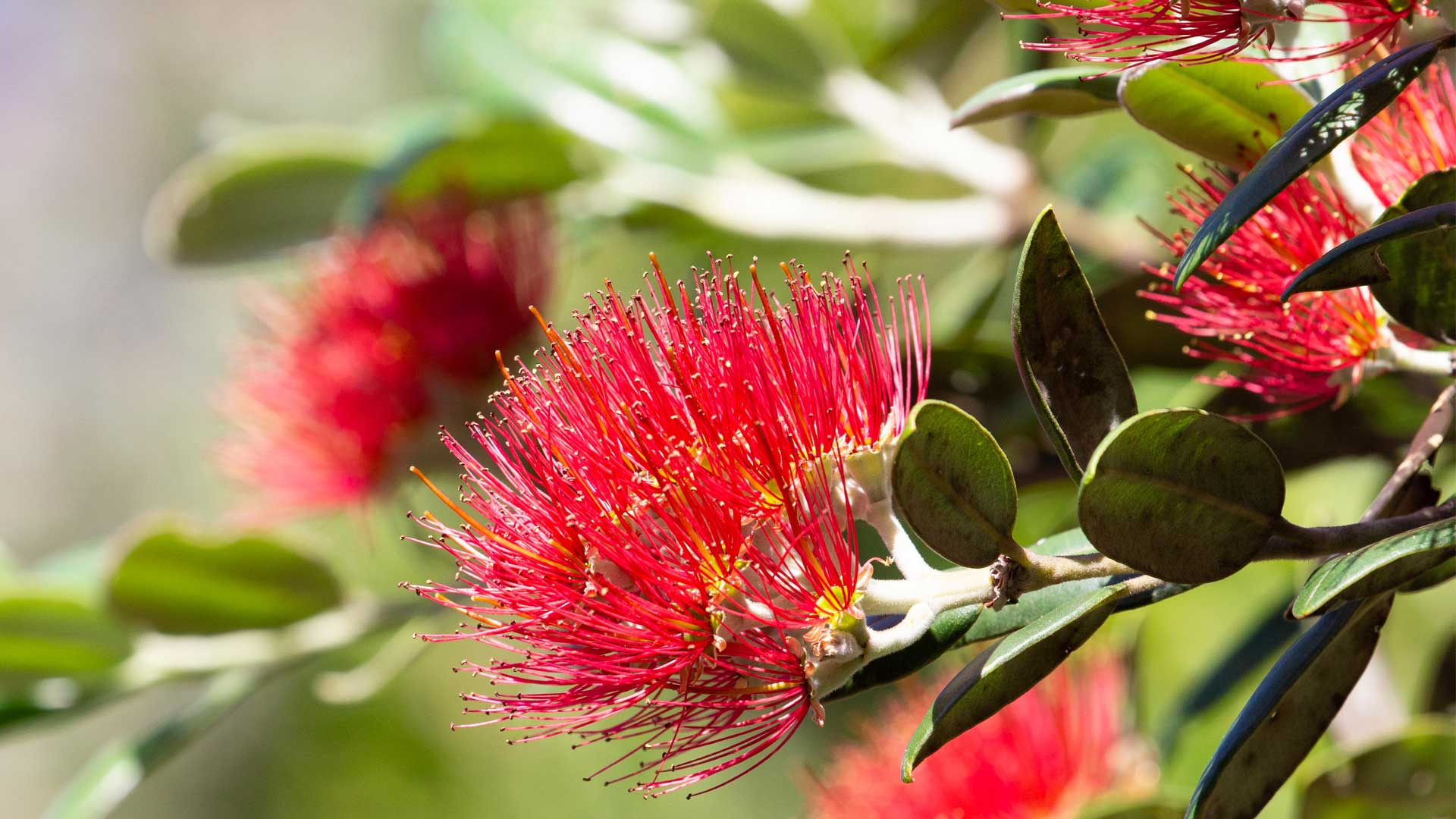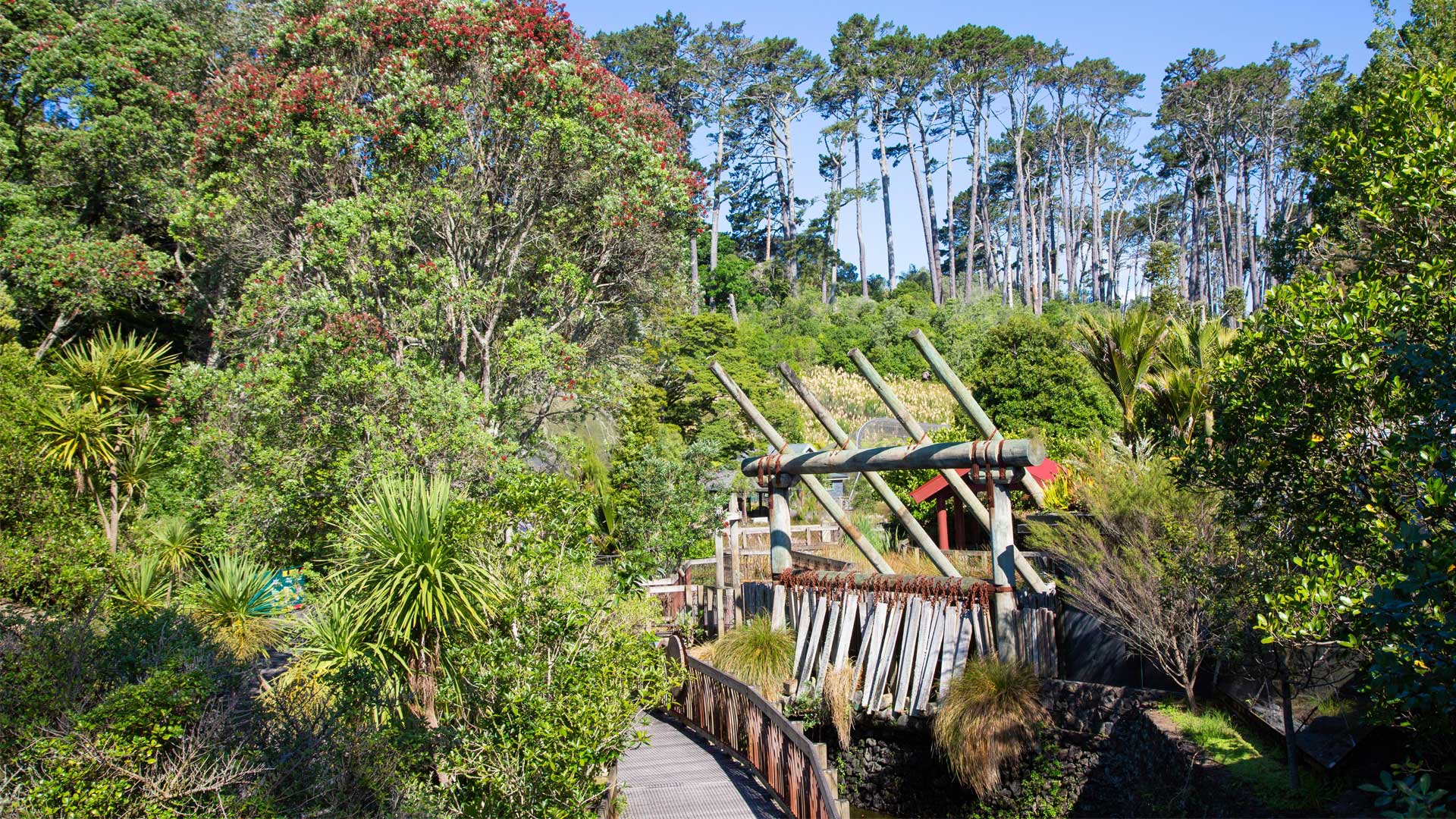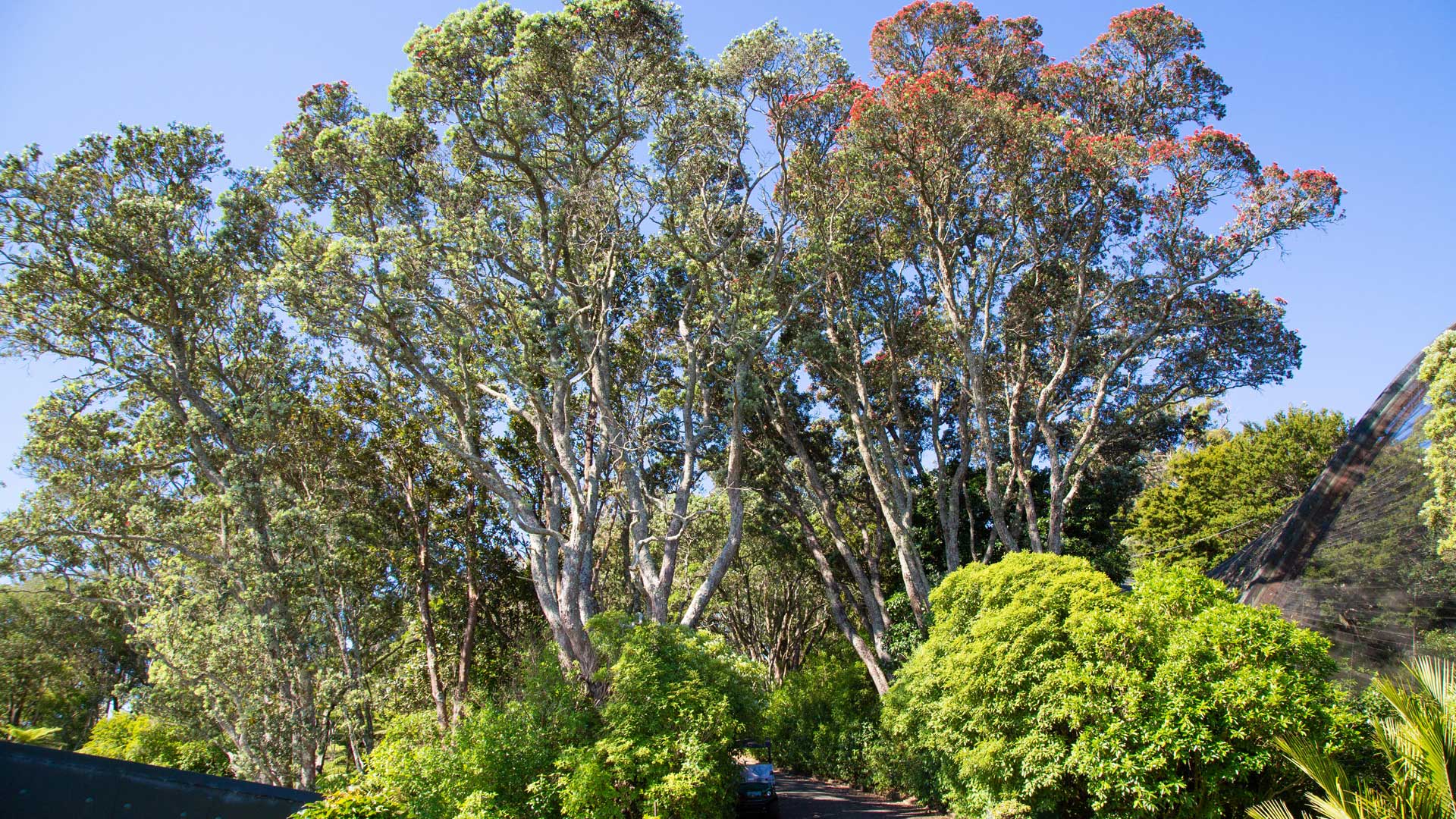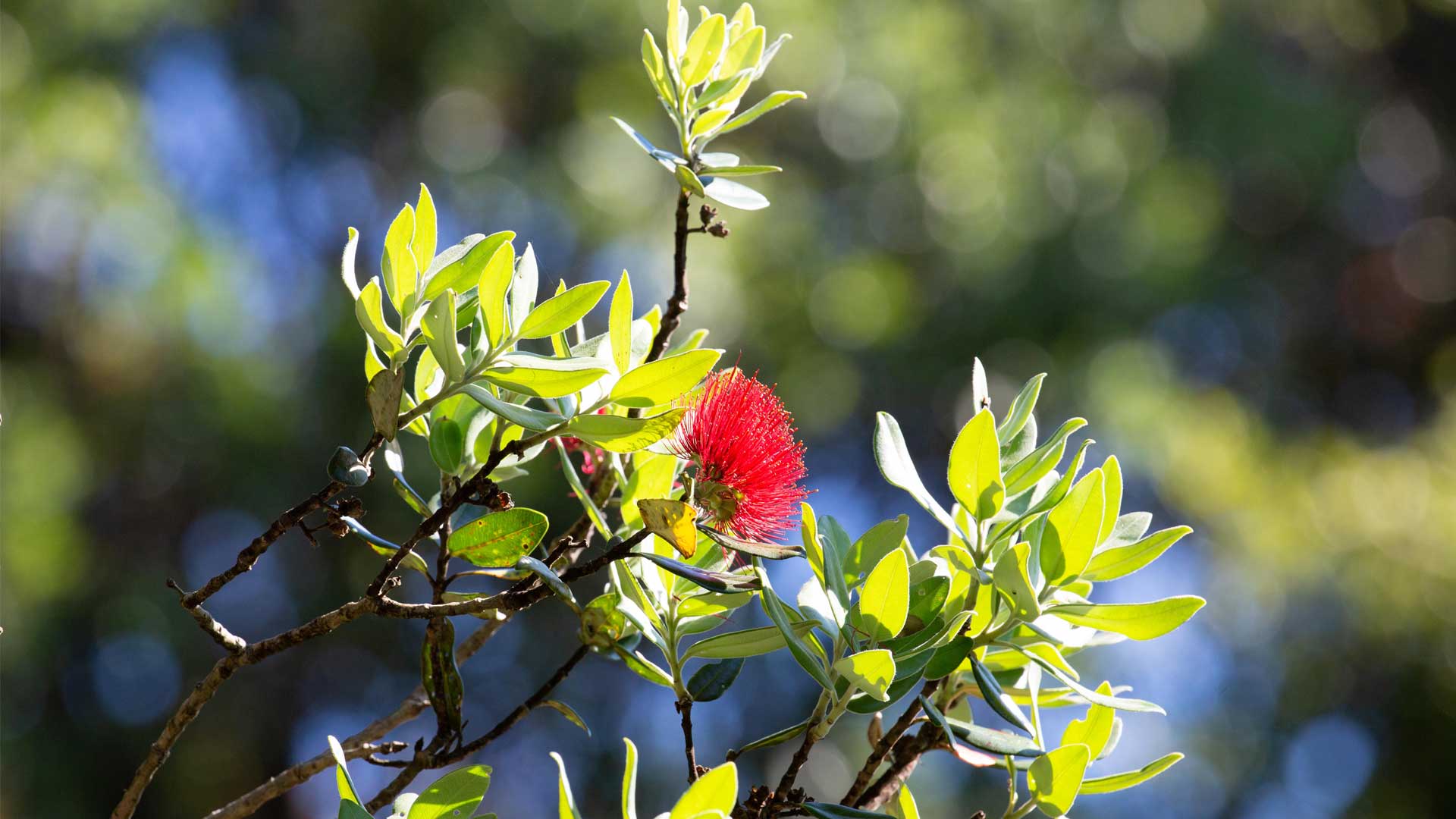Many of New Zealand’s special and endemic plants like rātā, kānuka and mānuka belong to the myrtle family (Myrtaceae) of plants, which is made up of about 3000 different species of tree, shrub and vine.
Within this family, sit New Zealand’s two species of pōhutukawa – our most familiar and recognisable strain is Metrosideros excelsa, and found on Aotearoa’s volcanic Kermadec Islands is Metrosideros kermadecensis. The name Metrosideros comes from the Ancient Greek metra which means ‘iron hearted’ and the species name excelsa comes from the Latin excelsus for ‘sublime’ – for it’s strong, robust timber.
Pōhutukawa are tapu (sacred) to Māori, known as rākau rangatira (chiefly trees) for their status in the forest canopy as one of the first to greet the sun. There is also the Māori pūrākau (legend) about the warrior Tawhaki – the atua (god) of thunder and lightning – who was flung from the skies by Tama-i-waho and in the process of falling from the heavens to earth, stained the flowers of the pōhutukawa and rata bright red with his blood.
Parts of the tree are used in traditional Māori rongoā (medicine); the inner bark can be boiled into a juice to cure dysentery, and the flower’s pale and sweet nectar is used to treat sore throats.



